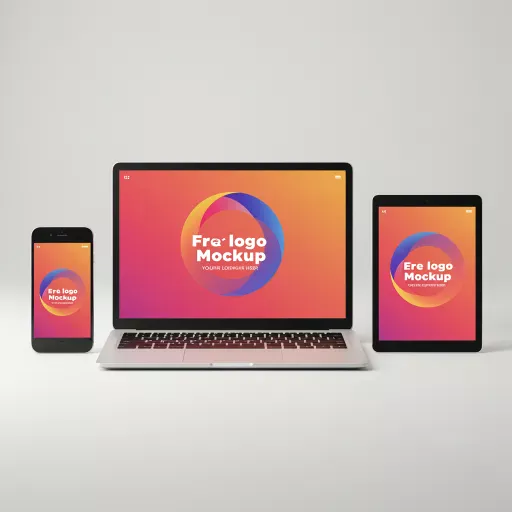Your social media profiles aren’t just online placeholders—they’re the digital handshake between your brand and potential customers. First impressions happen in seconds, and in 2025, a thoughtfully crafted social presence can be the difference between a scroll past and a new customer. This blueprint unpacks the strategies that transform ordinary business profiles into magnetic brand experiences that drive real engagement and measurable results.

Why Optimised Social Media Profiles Matter
First impressions count. According to recent research, 91% of Australian social media users agree that social media is how they keep up with trends and cultural moments Sprout Social. Your profile is often the first touchpoint potential customers have with your brand, making it essential to create a strong, professional presence.
Optimised profiles improve discoverability. With proper keyword integration and complete information, your business becomes more visible to potential customers searching for your products or services.
They build trust and credibility. Professional, consistent profiles signal to visitors that your business is legitimate and trustworthy, increasing the likelihood of engagement and conversion.
Essential Elements of an Optimised Social Media Profile
Profile and Cover Images
Your visual elements are the most immediate aspects of your profile. According to UpGrow’s 2025 Social Media Checklist, you should ensure your profile and cover images are:
- Properly sized for each platform:
- Facebook: 180x180px for profile images, 820x312px for cover photos
- Twitter/X: 400x400px for profile images, 1500x500px for cover photos
- Instagram: 320x320px for profile images
- LinkedIn: 400x400px for profile images, 1584x396px for cover images
- High-quality and professional: Avoid blurry, pixelated images that can make your brand appear unprofessional.
- Consistent across platforms: Use the same or similar imagery across all platforms to strengthen brand recognition UpGrow.
Bio and Description
Your bio should concisely communicate your brand’s value proposition and personality. For maximum effectiveness:
- Keep it clear and concise: Write a clear value statement with a call-to-action.
- Include relevant keywords: Incorporate terms your target audience might search for.
- Highlight your unique selling proposition: What makes your business different from competitors?
- Add a call-to-action: Direct visitors to take a specific next step.
For Instagram, keep your bio within the 150-character limit while still conveying your brand’s essence ContentStudio.
Contact Information and Links

Make it easy for potential customers to reach you:
- Include up-to-date contact details: Email, phone number, and physical address if applicable.
- Add your website link: Direct traffic to your main site or a specific landing page.
- Consider link aggregators: Tools like Linktree can help you share multiple links from platforms with link limitations.
- Test all links regularly: Ensure they work properly and lead to the intended destinations.
Platform-Specific Optimisation Strategies
As the platform with the largest user base (over 3 billion monthly active users), Facebook requires special attention:
- Complete the About section thoroughly: Include business hours, services, and company milestones.
- Set up a custom username: Create a memorable, brand-aligned @username.
- Enable relevant call-to-action buttons: “Shop Now,” “Book Now,” or “Contact Us” depending on your business type.
- Verify your business page: The blue verification badge adds credibility.
With its visual focus, Instagram requires a different approach:
- Craft a compelling bio with relevant hashtags: Include 1-2 industry hashtags in your bio to improve discoverability.
- Use Story Highlights strategically: Create categorised highlights that showcase your products, services, or brand values.
- Switch to a Business account: Access analytics and additional features like contact buttons.
- Optimise your grid layout: Plan your posts to create a visually cohesive profile when viewed as a whole.
For B2B businesses, LinkedIn optimisation is crucial:
- Create a detailed Company Page: Include your founding date, company size, and industry.
- Add a compelling “About” section: Tell your brand story and highlight your mission.
- Showcase products and services: Use the Products tab to highlight your offerings.
- Post job openings: Even if you’re not actively hiring, this shows company growth.
Twitter/X
With its fast-paced nature, Twitter/X requires concise optimisation:
- Pin your most important tweet: Feature a high-performing or important announcement at the top of your profile.
- Use relevant hashtags in your bio: Improve discoverability with industry-specific tags.
- Include location information: Especially important for local businesses.
- Customise your header image regularly: Update it to reflect current campaigns or seasonal themes.
Advanced Optimisation Techniques for 2025
Leverage AI for Profile Enhancement
In 2025, AI tools have become essential for social media optimisation. According to Ardent Communications, AI-enhanced personalisation is a key trend, allowing for tailored profiles that resonate with specific audience segments Ardent.
- Use AI tools for bio generation: Create multiple versions to test effectiveness.
- Implement AI-driven image optimisation: Ensure your visuals are perfectly sized and formatted for each platform.
- Analyse competitor profiles with AI: Identify gaps and opportunities in your own profiles.
Implement Social Proof Elements
Social proof continues to be a powerful trust signal in 2025:
- Highlight customer testimonials: Feature positive reviews directly in your profile or pinned posts.
- Showcase industry awards or certifications: Add these to your bio or about section.
- Display partnership logos: If you collaborate with well-known brands, make this visible.
- Feature user-generated content: Reinforce community engagement by showcasing content from your customers.
Optimise for Voice Search and AI Assistants
As voice search continues to grow, optimising your profiles for these technologies is increasingly important:
- Include conversational keywords: Phrase your bio and descriptions in natural language.
- Answer common questions: Anticipate what users might ask voice assistants about your business.
- Use location-based terms: Incorporate geographic keywords for local businesses.
Creating a Consistent Brand Identity Across Platforms

Consistency builds trust and recognition. According to Designveloper’s 2025 guide, maintaining brand consistency fosters trust and helps your audience instantly recognise your content amidst digital noise Designveloper.
Visual Consistency
- Use the same colour palette: Apply your brand colours consistently across all platforms.
- Maintain font consistency: Stick to your brand typography in images and graphics.
- Create templates for recurring content: Ensure a cohesive look for regular posts.
Messaging Consistency
- Develop a brand voice guide: Document your tone, vocabulary, and communication style.
- Create platform-specific messaging templates: Adapt your core messages to fit each platform while maintaining consistency.
- Train all team members: Ensure everyone managing your profiles understands your brand guidelines.
Measuring and Improving Profile Performance
Optimisation is an ongoing process. Regularly assess your profiles’ effectiveness:
- Track profile visit-to-follow conversion rates: Monitor how many profile visitors become followers.
- Analyse click-through rates on profile links: Determine if your calls-to-action are effective.
- Monitor engagement metrics: Assess how your profile contributes to overall engagement.
- Conduct A/B testing: Test different bios, images, or CTAs to identify what works best.
Common Profile Optimisation Mistakes to Avoid
Incomplete Information
Leaving profile sections blank or incomplete signals unprofessionalism. Ensure all relevant fields are filled out thoroughly.
Inconsistent Branding
Using different logos, colours, or messaging across platforms creates confusion. Maintain visual and tonal consistency.
Outdated Information
Regularly audit your profiles to ensure contact details, business hours, and other information remain current.
Neglecting Platform-Specific Features
Each platform offers unique features. Failing to utilise these (like Instagram Story Highlights or LinkedIn Showcase pages) means missed opportunities.
Conclusion: The Future of Social Media Profiles
As we move through 2025, social media profiles continue to evolve from simple online presences to sophisticated marketing tools. The most successful businesses approach profile optimisation strategically, understanding that these digital storefronts play a crucial role in the customer journey.
By implementing the strategies outlined in this guide, you’ll create compelling, effective profiles that not only attract attention but convert visitors into loyal customers. Remember that optimisation is an ongoing process—regularly review and refine your profiles to ensure they remain aligned with your business goals and audience expectations.


